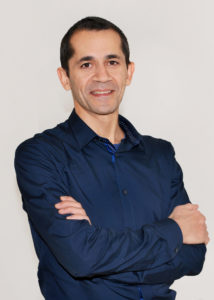Γενική Συνεδρία, Atma Suddhi Krama, Συνεδρία Πραναγιάμα
YOGA ALLIANCE RYT 200
Έναρξη 22 Οκτώβριου 2022
YOGA ALLIANCE RYT 300
Έναρξη 29 Οκτώβριου 2022
Experience meditation
with Krisnamacharya’s session
Atma Suddhi krama

12 contact continuing education units (CEUs)
with Yoga Alliance.
A Live Workshop via zoom
Saturday 4/6/2022 , 8:00 – 14:00
Sunday 5/6/2022 , 8:00 – 14:00
A unique method of yoga practice.
Atma Suddhi means Purity of the soul.
Atma Suddhi Krama is a meditation practice by Krishnamacharya
that helps awaken and develop the concept of the soul in Westerners yoga practitioners.
In this 12- hour workshop, you will learn:
- Why we use ujjayi breathing
- How to connect ujjayi with asanas
- How to use Asanas to prolong the duration of the breath and purify the body
- How to use Mudras to concentrate the mind and deactivate the emotions that affect us
- Ujjayi based pranayamas
- Nadi Sodhana based pranayamas
- The structure of Atma Suddhi Krama Session
Discover secrets, ancient practices and gain multiple benefits:
- Enrich your teaching in a unique way
- Master pranayama and meditation
- Improve Concentration and Memory
- Eliminate stress, tension and anxiety
- Sleep Better
- Enjoy Emotional Balance, Increased Clarity, Self confidence
- Experience Atman!
You will learn the key points to unlock and practice all the sessions of T.K. Sribhashyam’s book EMERGENCE OF YOGA Origin and development of the teaching of yoga

- It is a unique and authentic practice by T.K. Sribhashyam, son and disciple of Sri T.Krishnamacharya. Both come from a lineage in which knowledge has been transmitted for 20 generations without interruption.
- It lasts 45 ‘- 55’ so you can easily integrate it into your daily life.
- It is accessible to everyone, without having to do difficult asanas.
- You will learn in detail the practice of pranayama that is an absolute necessity in a yoga session and is often neglected.
This method of Yoga meditation is based on 4 STEPS
#1 Breath-centric asanas to purify the body
Asana practice is often oriented towards anatomy and refining structural alignment. And this is a good practice, but we can use breath centric asanas rather than form centric Asana to impact our system at a deeper level, our physiology. And to also prepare our body and mind for pranayama and meditation, which we’ll be talking about in this course.
#2 Pranayama to concentrate and purify the mind
The Yoga tradition tells us the mind and breath are twin laws of life. They travel together. When the mind is calm and clear, the breath flows smoothly.
Conversely, when the breath flows smoothly, the mind calms and clears. The condition of one determines the condition of the other. This fundamental law governs life on the material plane.
To free the mind from disturbance and distraction and allow it to flow inward one-pointedly requires understanding the dynamics of our breath and attaining mastery over it. And this in turn requires freeing our mind from its roaming tendencies and making it flow peacefully. Attaining mastery over our breath leads naturally to freedom from the mind’s habit of wandering aimlessly.
#3 Dharana (concentration on vital points) to direct awareness inwards
The technique of dhāraṇa consists of directing the eyes towards a vital point, marma sthāna, referenced by an anatomical location. The organ or anatomical place is not evoked, but the eyes are directed towards the vital point. 16 vital points are used in dhāraṇa. Dhāraṇa can be performed in āsanas, mudras or prāṇāyāmas.
#4 Experience Atman!
When the mind is flowing effortlessly inwards, consciousness has the opportunity to experience our intrinsic beauty and joy, and bathe in the inner luminosity of our soul, that is the atman.
WORKSHOP OUTLINE
Ujjayi breathing
- Why we use ujjayi breathing
- How to connect ujjayi with asanas
- How to count the duration of breath using a metronome
- How to count the number of breaths in asanas and in pranayama
How to use Asanas to prolong the duration of the breath cycle
As Krishnamacharya quotes:
Encompass that which promotes
the length and subtlety of the breath
as an activity to be followed everyday.
In other words:
“You have to practice in such a way that day by day the breath gets longer and subtler.”
To achieve this we extend the duration of the inhalation or exhalation of Ujjayi in the asanas and also use breath holds (kumbhakas) in asanas.
Practice Asanas to lengthen:
- Puraka (inhalation),
- Rechaka (exhalation)
- Antah Kumbhaka (holding of breath after inhalation)
- Bāhya Kumbhaka (holding of breath after exhalation)
How to use Mudras to deactivate emotions that affect us
A mudra is defined by a physical and mental position, preventing the kleśas from developing
Yoga defines several parameters for the practice of mudras:
– A precise āsana,
– A defined number of breaths, 6, 8, 12 or 16 according to the mudra,
– Long breaths, with exhalation twice as long as inhalation,
– A concentration on a vital point (marma sthana),
– Kumbhaka, retention which traditionally comes after exhalation.
In the workshop you will learn and practice the following mudras:
- Maha Mudra,
- Maha Bandha,
- Asvini Mudra,
- Kechari Mudra,
- Tataka Mudra
Practice of Ujjayi based pranayamas:
- Ujjayi Anuloma removes weariness coming from excess of mental or physical work, sentimental or emotional shock. It also stabilizes the mental state.
- Ujjāyi Viloma is a Pranayama, acting more on the nervous system, reduces mental distraction and helps re-establish a peaceful state of mind.
- Ujjāyi Pratiloma acts both on the nervous systems and on the thought processes and removes emotional distraction
Practice of Nadi Sodhana based pranayamas:
- Abhyantara Vṛtti is a Prāṇāyāma that helps to focus the mind towards the soul, located in hṛdaya (spiritual heart).
- Sama Vritti (1:1:1:1) is a Prāṇāyāma that helps the practitioner to reach contemplation beyond the solar disc. Facilitates meditation on the Creator (Prajāpati).
- Sūrya Bhedana (1:2 or 1:4:2) is a Prāṇāyāma that helps the practitioner to attain a contemplation beyond the solar disc. Facilitates meditation on the Creator (Prajāpati).
The structure of the Basic Session
By practicing āsanas alone and given the risk of being attracted by bodily sensations, an individual could be feeding impurities (kleshas).
In order to prevent a practice consisting solely of āsanas from deviating from its objectives by awakening passions, the session always commences and concludes with a prāṇāyāma.
– 1 prāṇāyāma – 12 breaths
-1 āsana standing up – 6 breaths
-1 āsana on the back– 6 breaths
-1 āsana on the stomach– 3 breaths
– Sarvānga Āsana – 12 breaths
-Śīrṣa Āsana – 12 breaths
-Sarvānga Āsana variations – 12 breaths
– 1 āsana on the stomach– 3 breaths
– 1 āsana sitting – 6 breaths
– 1 Mudra – 12 breaths
– 1 Prāṇāyāma (preferably Nāḍī Śodhana) 12 breaths.
Parameters for a practice session
The session is governed by some rules concerning the order and duration of asanas, pranayamas and mudras
Example:
The number of breaths during all the āsanas (without counting the mudras) should be inferior or equal to the number of breaths of all the prāṇāyāmas and mudras:
BREATHS IN PRANAYAMA AND MUDRAS
12 + 12 + 12 + 12 = 48
BREATHS IN ASANAS
6 + 6 + 3 + 12 + 12 + 3 + 6 = 48
Practice of Atma Suddhi Krama session
Meet the Instructor

Hi, I am Ioannis Chrysoulakis
I am a certified teacher by the Yoga Alliance (E-RYT® 500).
I feel very honored and grateful that I learned this rare knowledge from Sri TK Sribhashyam himself.
My mission is to transmit it through this workshop, so that this invaluable aspect of Sri T. Krishnamacharya’s teaching would not be forgotten and that everyone could reap its benefits in life and spiritual development.
F.A.Q
1. Who is this workshop for?
This workshop is for every yoga practitioner and yoga teacher who want to deepen their knowledge and their practice on meditation
2. How is it different from other styles of yoga?
It is a unique and authentic yoga practice which stems from Sri T. Krishnamacharya tradition.
It is a balanced practice with breath-centric asanas to purify the body, mudras to deactivate the emotions that affects us and pranayama to purify the mind and restore the conditions that help the spiritual concentration.
3. I’m already experienced in asanas and pranayama. Is this for me?
Of course it is. The more experience you have, the deeper your concentration will be. As you can see from the structure of the session, it is the combination of pranayamas, asanas and mudras and the fact that the measure of time is the breath, that make it unique and lead the mind to meditation.
4. I am a beginner in yoga. Is this session for me?
If you can do Ujjayi breathing, yes it is.
Ujjāyi is the breathing technique recommended in the āsanas and the mudras.
Ujjāyi is a natural breathing with a specific sound produced by the friction of air at the back of the palate, behind the uvula. Ujjāyi is practiced breathing in and out through both nostrils, mouth closed.
We use Ujjayi to control and prolong the breathing. When the breathing is slow, smooth the mind is fit for meditation
If you don’t know Ujjayi, send me an email to info@idyoga.gr and and we will schedule a session to learn and practice ujjayi and get ready for the workshop.
5. I ‘ve been disappointed of NO improvement in asanas and meditation for years. Are you sure this session will help me?
Honestly I don’t know you, so I can’t guarantee anything but what I know for sure is that this session helps not only beginners but experienced yoga practitioners too. I would be surprised if you followed this practice and were an exception. It rarely happens.
6. When can I expect the first results?
From the first time, although it is a delicate and quality practice, susceptible to greater deepening over time.